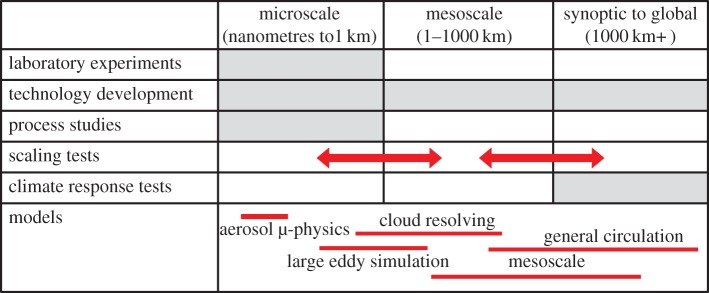Figure 1.

Mapping of experiment types and classes of models (red lines) to physical scales illustrates the breadth and complexity of solar geoengineering research. No single model or experiment can bridge the gap from smallest to largest scale. For example, microphysical models describe aerosol processes at scales of nanometres and cloud drops and ice crystals at micrometre to millimetre scale. Clouds (ranging from 10 to 1000 m) are addressed by large eddy simulation models and more generally by cloud resolving models. Mesoscale models and general circulation models (GCMs) have similar physics, but mesoscale models can be nested to provide high-resolution simulations that cannot be matched by GCMs. Chemistry can be built into dynamic models (typically mesoscale models and GCMs) or simulated in off-line chemical-transport models. The different types of field experiments, particularly process studies, scaling tests and climate response tests could bridge gaps between scales reducing the uncertainty of large-scale predictions of the risks and efficacy of SRM.
